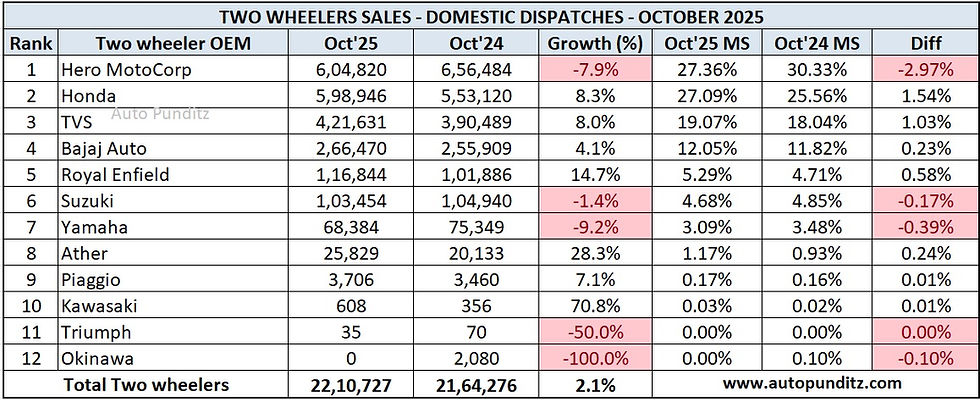Electric & Hybrid Cars Sales Analysis - 2023
- managementpunditz

- Jan 23, 2024
- 4 min read
Highlights
92,344 BEVs (Battery Electric Vehicle) and 82,606 HEVs (Hybrid Electric Vehicle) were sold in 2023.
The market share of BEV and HEV was 2.3% and 2% of total PV sales, respectively.
BEV sales were in continuous decline in H2 2023.
Tata and Toyota continue to dominate the BEV and strong-hybrid EV markets with 72% and 78%, respectively.
Tata Tiago EV was the best-selling BEV product, and Toyota Innova Hycross was the best-selling strong-hybrid EV.
2023 New Product introduction

Six brand-new BEV products, as well as a facelift, went on sale in 2023. Toyota was the only company to introduce new HEV models in the higher price range. In H2-2023, Maruti also debuted a rebadged Toyota Hycross known as the Invicto.
Market


There was a strong surge in Q1 BEV sales due to the introduction of new products and high dispatches before the FY 2022-23 closure to manage internal CAFE figures. The introduction of the MG Comet hatchback reinforced the growth momentum in Q2-2023. However, in the ensuing quarters, BEV sales started to decline despite the best-ever festive season for ICE vehicles. Decline was across the board, except for the Nexon EV facelift launched during festive season.
HEV sales were largely driven by Toyota’s products, and the supply situation was not very consistent across quarters.
What is important to note here is that the BEV and HEV segments are still in a nascent stage in India, and a very limited range of products are available across the segments. The dichotomy between BEV and HEV is the price point and taxation. All current BEV products just attract a 5% incentivized GST rate, and current HEV products are in the 43% GST slab. The average car sales price for BEVs is ₹ 15.4 lakhs, and for HEVs it is ₹ 25.1 lakh, with a sales gap of mere 10%. Bottom line: It is the product with the right value proposition that will alter the market size. The Volvo XC 40 Recharge and BMW iX are prime examples in the luxury segment.
BEV customer dissonance – ‘claimed range!’

We will start here from the beginning. Cars with an internal-combustion-engine (ICE) have to undergo emission testing for roadworthiness certification. These tests are carried out in the laboratory on dynamometers, where vehicles remain in static condition. Vehicles have to cover the modified Indian driving cycle (MIDC), and equipment measures the tailpipe emissions. Fuel consumed during this cycle is reported as fuel efficiency by manufacturers; these figures are byproducts of emission testing procedures. During MIDC drive, all auxiliary power systems are switched off, i.e., no AC, no headlamp that consumes additional energy. And the average speed is limited to 32.9 kmph. These conditions are now part of standard testing; however, they vary drastically from real-world operating conditions. Which is why, in real-world conditions, vehicles either don’t meet these figures or sometimes exceed them too.
When it comes to BEVs, as they don’t have a tailpipe, they don’t have to undergo emission testing. However, they are also subjected to MIDC drive, and the range obtained during the test is reported by manufacturers.
Here starts the problem: the real range of current BEV products is lower than manufacturers' reported data by 20% to 30% in real-world conditions. A similar gap exists for products tested on the European WLTP (Worldwide Harmonized Light Vehicles Test Procedure) cycle and simultaneously tested in India under MIDC. This is because WLTP is more realistic than MIDC.
Under real-world driving, when such a claimed range is not met, the mental break-even calculation done before the purchase decision goes for a complete toss for early adopters in India. Again, in India, word-of-mouth publicity is pretty strong in product advocacy, and in the age of social media, it gets further pronounced. Dissonance from the current customer base also had an impact on sales in Q3 and Q4 of 2023.
In the case of HEV, customers are much more satisfied as Toyota’s products deliver better fuel efficiency than other ICE fuel offerings.
Manufacturer

Tata remains the largest BEV maker in India, with a 72% market share.
MG and Mahindra have captured a sizable market share in 2023, and the discount was also higher.
Toyota continues to lead HEV sales with a 78% share.
Maruti comes next, and Honda’s sales have less traction due to higher pricing.
Body style

Hatchbacks with a lower entry price point have a higher BEV segment share of 47%; SUVs are next at 41%. Currently, the HEV segment is limited by UV-dominated body styles from Toyota and Maruti.
Products

The Tata Tiago EV was the best-selling BEV in 2023.
Amid production constraints on Tata BEVs, Tata seems to have shifted production from Nexon to Tiago.
Mahindra XUV400, Citroen eC3, and BYD Atto3 had limited sales traction, and discounts were on the higher side.
The Toyota Innova Hycross was the best-selling HEV in 2023, followed by the Toyota Hyryder.
Maruti’s HEV offering has limited appeal, as products are on the higher side of the price spectrum.

With more BEV products lined up for 2024, especially in SUV/crossover body styles, the BEV market will expand for sure.
However, range-related dissonance needs to be sorted out, to promote the sales of BEV on their own merit, with less government incentive. Because in the future, if ever fuel prices come down, it will significantly impact BEV sales.



